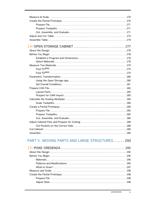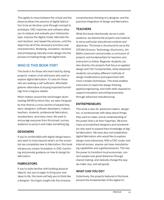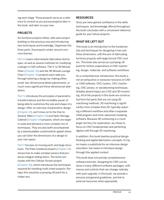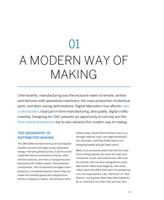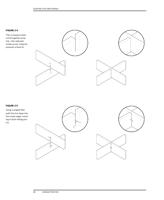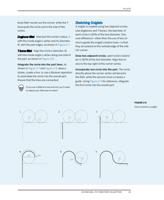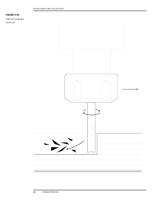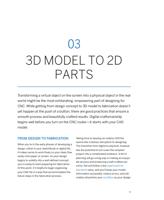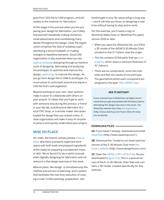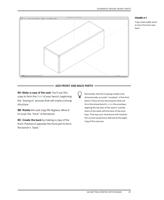
STANDARDS VERSUS PROPORTIONS
FIGURE 4-4
Refine bench massing
proportions
STANDARDS VERSUS
PROPORTIONS
Good design always meets general ergonomic
standards, and it also works within manufactur-
ing methods, material limits, and other con-
straints. After optimizing a design for function
and fabrication, you can still find ample room
for creative maneuvering during the design pro-
cess.
When we design, we like to introduce balanced
proportions at varying scales within the object,
from the overall dimensions down to the small-
est joinery details. Proportions are a kind of
shorthand that designers use for organizing
forms. Proportions, especially those found in
nature (like the golden ratio, 1:1.618), bring vis-
ual harmony into a design.
The 18” × 18” × 48” massing you just modeled
meets ergonomic and fabrication criteria.
Lengthening it, so it’s 18” × 18” × 54” (450 mm
× 450 mm × 1350 mm) gives it a perfectly pro-
portioned ratio of exactly 1:1:3, without interfer-
ing with ergonomic needs or fabrication
constraints.
REFINE MASSING DIMENSIONS
5A: Pull one end of the volume, so that the
length matches 54″, shown in Figure 4-4.
5B: Place the volume, so that the center of its
bottom face sits on the origin.
5C: Group and then place the massing onto
layer zzz_massing by clicking on the Entity Info
window and selecting the layer from the drop-
down menu. You’ll need the massing for the
next step, so leave the layer turned on.
SCHEMATIC DESIGN: MODEL
PARTS
Since the actual bench will be fabricated from
¾″ stock material, it’s sensible to use virtual
sheet goods of the same thickness to create
the bench parts. In this section, you’ll transition
your rough massing model into a bench in its
absolute simplest form—a long horizontal seat
with four vertical “legs” on each side. Next,
you’ll copy and modify the ¾″ thick stock,
aligning it with the massing block, until you’ve
created rudimentary versions of three bench
parts.
94
DESIGN FOR CNC













